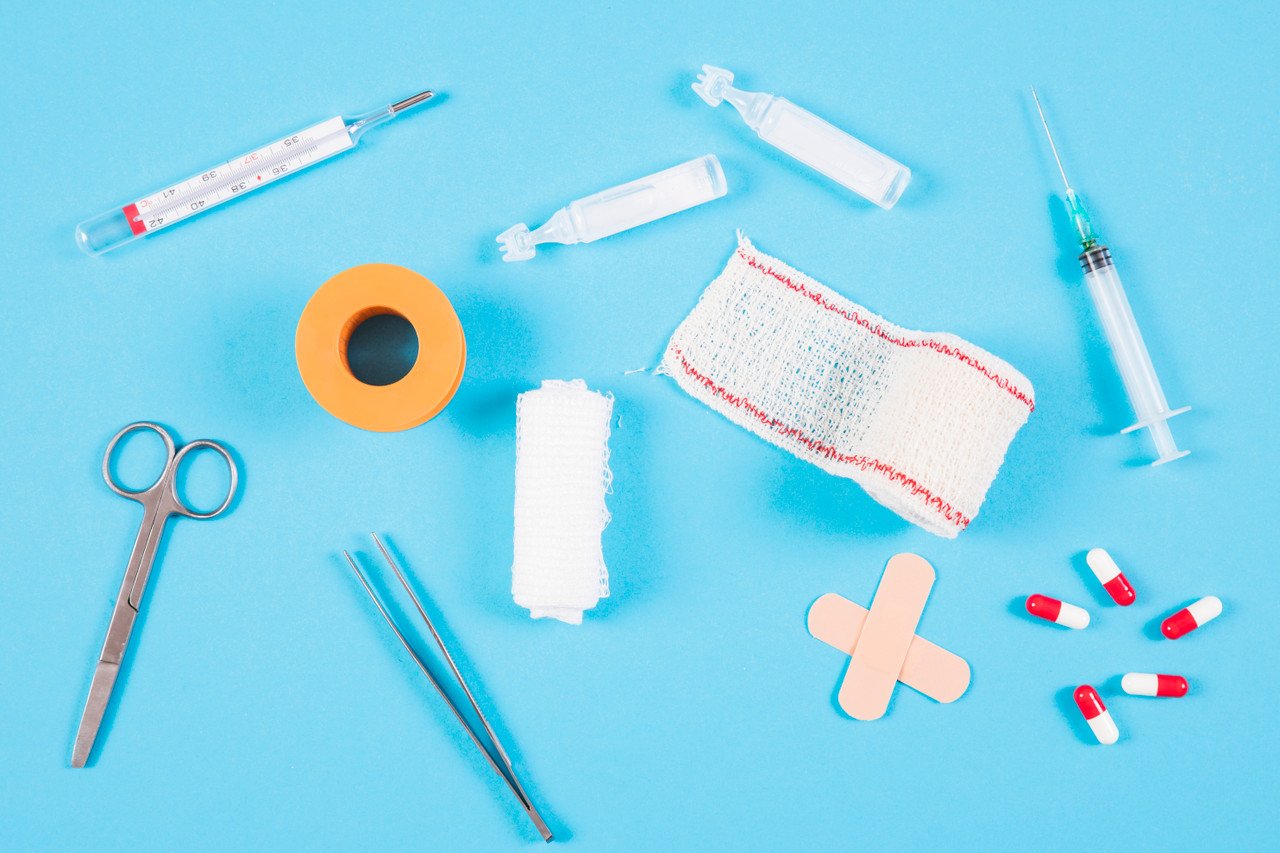What Are the Essential Items in a First Aid Kit?
Posted by Darman Distributors on Jul 30th 2025
Another easy but very important safety tip is to always have a first aid kit with you, whether you're at home, at work, or on the go. Anytime, anywhere, accidents can happen, and having the right tools on hand can make a big difference in how well you handle them.
Let's look at the first aid kit essentials you should always have on hand, why they're important, and how to make sure your kit is prepared to go when you need it.
Why You Need First Aid Kit Essentials?
No one expects to deal with cuts, burns, sprains, or allergic reactions on an average day, but these incidents are more common than we think. Having the first aid kit essentials means you’re prepared to treat minor injuries quickly and prevent them from becoming more serious.
Your first aid kit should be prepared to handle common medical emergencies, such as a scraped knee, a headache, or the need to remove a splinter. For those who enjoy camping, hiking, or international travel, first aid kit essentials for travelling are even more critical. Reviewing the official OSHA first aid list can also guide you in building or checking your kit.
The Essentials of a First Aid Kit
While kits can vary depending on your lifestyle and environment, certain items are universally recommended. The following are the essentials of a first aid kit:
- Adhesive Bandages (Various Sizes) – Useful for covering cuts, blisters, or abrasions to keep them clean and protected.
- Sterile Gauze Pads and Adhesive Tape – For covering larger wounds that bandages can’t handle. Gauze helps control bleeding and protects the area.
- Wipes or a solution that kill germs: Cleaning wounds is an important part of keeping them from getting infected. A lot of people use alcohol wipes or hydrogen peroxide.
- Antibiotic Ointment—Putting a thin layer of ointment on a wound after cleaning it can help it heal faster and keep it from getting infected.
- Tweezers are useful for pulling out splinters, ticks, and other small things that are stuck on the skin.
- Scissors – If you need to, you'll need scissors to cut gauze, tape, or clothing.
- Disposable Gloves – Protect yourself and others when dealing with bodily fluids or open wounds.
- Pain Relievers – Over-the-counter medications like ibuprofen or acetaminophen help with pain, swelling, or fever.
- Burn Cream or Gel – Essential for treating minor burns, reducing pain and promoting healing.
- CPR Face Shield or Mask – A small, foldable barrier that can help you perform CPR safely.
For treating a variety of minor injuries and emergencies, these 10 essential first aid kit items cover the fundamentals. You can tailor your kit to your specific needs or family health concerns, and compare your kit against the OSHA first aid list to ensure nothing important is missing.
Customizing First Aid Kit Essentials for Your Needs
Different environments call for different first aid kit essentials. For example:
- Digital thermometers, pain relievers made just for kids, and bandages made just for kids may be good things for families with young children to bring.
- People who like to be outside might want to add bug spray, aloe vera for sunburns, and blister treatment.
- People who have allergies or long-term illnesses may need to bring an epinephrine injector, extra medicine, or a printed list of their medical conditions and emergency contacts.
For those who are frequently on the road or enjoy exploring new places, first aid kit essentials for travelling should be light, portable, and packed with versatile supplies. Include items like water purification tablets, motion sickness medication, and compact emergency blankets for added readiness. These additions go hand-in-hand with OSHA first aid recommendations for preparedness.
How to Maintain and Store Your First Aid Kit?
Even the best kits won’t help if they’re missing items or have expired medications. Regularly check your kit to:
- Replace used items
- Check expiration dates on ointments and medications
- Make sure everything is dry, sealed, and sterile
Store your first aid kit in a cool, dry place and keep it out of reach of children. It’s also smart to have multiple kits—one at home, one in your car, and one in your backpack or luggage when traveling. Regular maintenance is a key part of following OSHA first aid safety guidance.
Choosing the Right Kit: Buy or Build?
Many stores sell pre-assembled first aid kits, which are a good option if you want a quick and easy solution. However, building your own kit allows you to tailor the contents based on your needs, environment, and preferences.
The essentials of a first aid kit should be included first, followed by any specialized items. Make sure that every item you buy or build is of high quality and comes in a long-lasting, watertight container.
A Simple Step Toward Safety
Accidents happen for no reason, but how you react doesn't have to. You can handle small emergencies at home, on the job, or while traveling the world if you have the right first aid kit essentials.
Don't wait until something goes wrong to get ready. Make sure you have all the necessary first aid kit essentials by reviewing your kit today. Focusing on the essentials of a first aid kit can make all the difference in how you handle common injuries, whether you're putting together your first kit or updating an old one.
Whether you're getting ready for a trip or just cleaning out your medicine cabinet, remember that the best way to stay safe is to have the right first aid kit essentials with you at all times. By aligning with OSHA first aid guidelines, you’ll be prepared to act quickly and safely in most situations.

